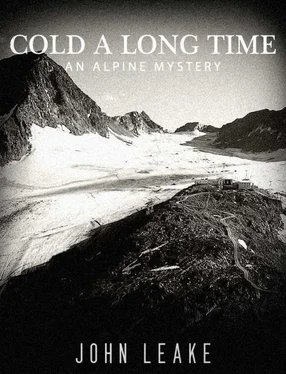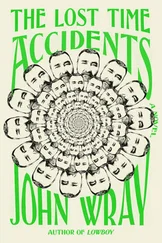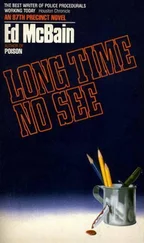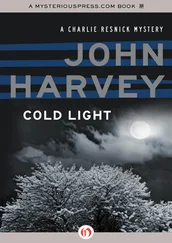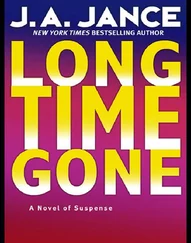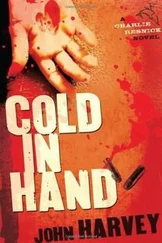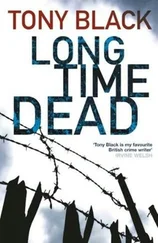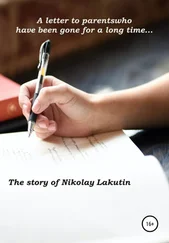In short, the gendarmerie believed that Duncan had suffered an alpine accident on the afternoon or evening of August 9. As none of the searches thus far had found his body, it was possible it would never be found. With snow falling at upper elevations, Commander Hofer had decided to call off the official search. However, everyone in the valley was aware of Duncan’s disappearance, which meant that mountaineers, highland herdsmen, and hunters would continue to keep an eye out for him or his body.
With no body and no proof, how could Lynda and Bob accept that Duncan had died in a mountain accident on August 9? Ron Dixon insisted he was “ninety percent sure” he had spoken with Duncan on August 10. The parking lot attendant at the Stubai Glacier—“a very exact man”—was certain the car had appeared in the lot after September 1.
Lynda phoned Ian Thomson at the Canadian Embassy and requested that Duncan’s call be traced on Dixon’s side in Vancouver. She also told him the Austrians were ending the search, and she wanted to know the Canadian government’s response to this decision. Thomson called back the next day and said that the Canadians were struggling to trace Duncan’s call to Dixon, but would keep trying. He then gave Lynda some advice.
“I think you and your family should get on with your lives,” he said. “Life is for the living.”
It was an odd thing for anyone to say to a mother who’d just been told that she would have to accept her son’s death, even without a body or any proof that he was dead. Stranger still was that a diplomat would say it. Lynda knew that External Affairs was tired of her questions and requests, but if she and Bob had not made hundreds of calls and driven thousands of miles all over the Alps, it was safe to say they would have no leads whatsoever. What was the point of keeping fat-assed consuls all over Europe, with their bloated staffs, chauffeured cars, and fancy villas, if they were unable or unwilling to do the work to find one of their missing citizens?
Unbeknownst to the MacPhersons at the time, on the same day that Thomson called them at their hotel, Interpol Vienna sent a cable to Interpol Ottawa with the following message:
MacPherson is believed to have had an accident while snowboarding on 9/8/89. He may have been killed by a fall into a crevasse. The above information has been communicated to the missing person’s parents and to the Canadian Embassy in Vienna.
In fact, this information was not communicated to the missing person’s parents. Inspector Klotz did not tell them that the police believed Duncan to have had an accident while snowboarding on 9/8/89. On the contrary, Klotz used the vague expression “mountain accident,” thereby insinuating that Duncan may have died while hiking after his snowboarding session. Inspector Brecher and Walter Hinterhoelzl both suggested that Duncan had tried to hike up to the Eisgrat on the morning of August 10 and perhaps drowned in a waterfall.
Ian Thomson also failed to disclose this specific information to the MacPhersons, even though the Canadian Embassy did receive the above cable from Interpol. Had Lynda and Bob understood that the police believed Duncan to have had a fatal crevasse fall while snowboarding, they would have recognized that this was indeed the most likely explanation for their son’s disappearance, and acted accordingly.
Without a trace of Duncan’s call to Ron Dixon, the MacPhersons tried to think of some other way to determine whether he’d come off the mountain on August 9. Lynda and Bob racked their brains all day on September 27, and then had a light bulb moment: They would find out if Duncan had returned his snowboarding equipment to the rental shop. Of course! If his gear was returned, that would indicate that he’d come off the slope and either hiked or taken the gondola down to the valley. If his gear wasn’t returned, that would indicate he’d gone out of bounds while snowboarding and fallen into a crevasse.
Surely someone at the rental shop would remember Duncan—the 6’1” Canadian boy who’d rented the equipment and then come back with Walter to renegotiate the price. The girl at the travel agency in Nuremberg and the girl at the music shop in Innsbruck remembered him. If he didn’t return his equipment, someone at the shop would recall thinking, “Uh oh, looks like the big Canadian didn’t bring back his gear.” Why had Inspector Brecher never mentioned this key investigative point?
Lynda called Joe Moffatt at External Affairs in Ottawa and explained to him the critical importance of determining whether the equipment had been returned. He acknowledged her concern and said he’d look into it. However, from recent experience, Lynda had concluded that she couldn’t rely on him to carry out the task, so she decided to look into it herself as well. As luck would have it, Felicity Lamb was coming for a visit that weekend, and she could speak German.
The Sport Shop 3000 was located in the Eisgrat Station. As Lynda and Felicity entered, they saw a girl behind the counter. Felicity introduced herself and Lynda, and explained that they were trying to figure out if Duncan had returned his snowboard and boots. The girl said she didn’t recognize him from his photograph. Felicity then asked to see the shop’s rental log, at which point the girl became noticeably tense and looked to her left at someone standing behind a ski rack. A young man in his twenties, apparently the manager, stepped out and explained that they had recently started keeping a new log.
“Could you find your old one?” Felicity asked.
“I will try,” he replied (indicating he had not already tried to find it for the police). He went into a back office, returned a few minutes later, and said, “I’m sorry, we have thrown away our log for August.” Not wishing to put him on the defensive, Felicity kept her surprise to herself.
“Is there any way to figure out if the equipment was returned?” she asked. The young man said he did not remember Duncan, but was certain that no snowboard was missing, which meant that if he had indeed rented his board from the shop, he must have returned it.
Unbeknownst to Lynda (again, she’d only learn about it twenty years later) External Affairs did make some effort to discover whether Duncan had returned his snowboard. On September 28, Ottawa sent a cable to Consul Thomson at the Vienna Embassy with four directives, including the following:
4. [First word redacted by censor] REPORTS INDICATE MACPHERSON WENT SNOWBOARDING ON STUBAI GLACIER AFTERNOON OF 09 AUG. WAS SNOWBOARD RECOVERED? IF NOT, THIS MIGHT PROVIDE ADDED PEG FOR RESUMPTION OF SEARCH.
On September 30 (the same day Lynda and Felicity visited the rental shop), Thomson replied:
RE PARA 4 REFTEL WALTER HINTERHOLZ SKIBOARD INSTRUCTOR IS 100/100 PERCENT CERTAIN THAT SKIBOARD WAS RETURNED. WOULD SUGGEST THAT RCMP/INTERPOL/AUSTRIAN POLICE AUTHORITIES IS BEST CHANNEL FOR SECOND GUESSING AUSTRIAN POLICE INVESTIGATION.
Again, Thomson did not disclose this vitally-important information to the MacPhersons, even though he repeatedly spoke to them on the phone after September 30. In Walter’s initial story to Lynda and Bob on September 22, he said nothing about Duncan having returned his snowboard, nor did he mention it again in his subsequent, recorded statements to Inspector Brecher and to the Innsbruck Court. Had Thomson told Lynda that Walter had become certain of the snowboard’s return, she would have confronted Walter before she left the Stubai Valley on October 14 and asked him what had prompted his revelation.
Though the MacPhersons continued to remain in the dark about the snowboard, External Affairs Ottawa concluded from Thomson’s cable that there was “no peg” on which to hang a request for the Austrian authorities to resume their search for Duncan. That his snowboard had been returned indicated that he had come off the glacier and gone somewhere else.
Читать дальше
